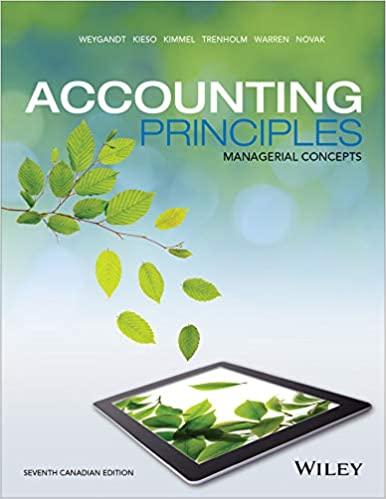Question
You have just completed your first year in your own business. You have used all your experience working at McDonald's and Tim Horton's to fulfil
You have just completed your first year in your own business. You have used all your experience working at McDonald's and Tim Horton's to fulfil your dream of having open your own restaurant. All your friends and family said you won't be able to compete against the big chains, but you managed to survive your first year of business. But you do not really know if you made money or not, or how best to finance future expansion. So you thought it would be best to draft an income statement and balance sheet using the principles you learnt in your accounting and finance courses at Humber College.
Use the information below to draft your fist year income statement and balance sheet for January 1 to December 31, 2020.
- On your Income Statement, be sure to detail your sales, COGS, Gross Profit, Expenses, Net Profit before tax, Net profit after tax.
- On your Balance Sheet, be sure to detail your Fixed Assets, Current Assets, Liabilities, Retained Earnings and Equity.
Your first year of business went like this:
- You decided to use your savings of $20,000 to start your new restaurant.
- You went to your bank with your business plan to request a loan. They rejected your request as you did not have enough capital, collateral or credit history with the bank.
- Your family gave you $30,000 to start your business. They did not expect any interest, but expected to be paid back over the next 5 years.
- You found a great location in Toronto to rent for $4,000 per month. You purchased the following:
- Stoves, fridges, freezers and other kitchen equipment for $15,000 to be depreciated at 20% per year.
- Tables, chairs and other furniture for $10,000, to be depreciated at 10% per year.
- Signage and fixtures for $5,000, to be depreciated at 10% per year.
- Cutlery, utensils, wares, pots, pans, menu's etc. for $5,000. These are expensed in the first year.
- You used your own car for your business which was valued at $5,000, and is to be depreciated at 20% per year.
- You opened your restaurant on January 1, 2020
- You launched your website and started advertising your opening specials on Social Media and your local community newspapers. Your spent $5,000 in marketing expenses in 2020.
- You hired two employees, one for the kitchen and another to serve customers. You would fill in as required. You paid your employees $15 an hour, just above minimum wage. They worked 10 hours / day from 11 am - 9 pm 6 days a week.
- You decided to pay yourself as the Restaurant Manager $2,000/mth until business grew.
- Sales began slowly as can be expected in January, but picked up after March. For the year, sales averaged $20,000 per month.
- The cost of the food and beverage ingredients was not very high, averaging 25% of sales.
- Utility costs were as follows: Electricity $250/mth; Gas $300/mth; Water $200/mth; Telephone and Internet $300/mth.
- Property and Liability Insurance: $1,800 / yr.
- Your vehicle expenses for gas, maintenance and car insurance totalled $4,000 for 2020.
- As a small business, your Federal Tax rate is 9% and your Provincial Tax rate is 3%.
- As of December 31 2020, you had no accounts receivable from your customers, but you owed your food and beverage suppliers $3,500. All other expenses were fully paid up. Your inventory of food and beverage ingredients amounted to $2,500.
| Income Statement | $$ | Balance Sheet | $$ |
| Sales Less COGS Gross Profit Less Expenses (List) Net Profit Before Tax Taxes Net Profit After Tax | Current Assets (List) Fixed Assets (List) Less Depreciation Total Assets Current Liabilities (List) Long Term Liabilities (List) Owners Equity Retained Earnings Total Liabilities and Equity |
Step by Step Solution
There are 3 Steps involved in it
Step: 1

Get Instant Access to Expert-Tailored Solutions
See step-by-step solutions with expert insights and AI powered tools for academic success
Step: 2

Step: 3

Ace Your Homework with AI
Get the answers you need in no time with our AI-driven, step-by-step assistance
Get Started


